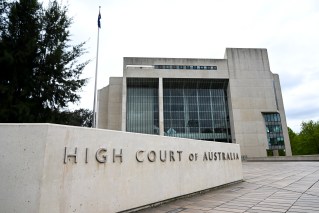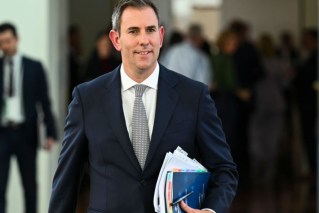Australians owe more than $1 trillion. No worries.

Shutterstock
Congratulations Australia. Households now have more than $1 trillion in debt. But given what extreme levels of debt did to the US economy during the GFC, should we be worried?
The message from economists is a sober one: we should be alert, but not alarmed. Our situation has one important difference to the US. To put it simply, in Australia, the people who hold the debt are rich enough to repay it.
But that’s not a green light to relax on borrowing. Australia has one of the highest levels of private debt in the world, leading some commentators to speculate that the nation is headed for a debt crisis.
Roy Morgan Research industry communications director Norman Morris said there was no “magic number” for when household debt becomes an issue – not even one trillion.
Mr Morris compared the debt figure with Australian household assets, which were more than $6.3 trillion. The largest source of wealth – and debt – came from owner-occupied homes.
Grattan Institute economist Saul Eslake was similarly relaxed. He warned against judging Australia’s debt levels by using international comparisons.
“The level of household debt relative to income is higher than it ever got to in the United States, but the US has been through a very painful deleveraging, reducing debt, whereas we haven’t.”
How do Australians use debt
The majority of Australia’s household debt, $703 billion, is owner-occupied mortgages. A quarter is investment mortgages, while there is $24 billion in personal loans and $18 billion in credit card debt.
Among other factors, the reason that Australia’s high private debt level is not a concern to many economists is because of who owns it. According to Roy Morgan Research, households that earned more than $100,000 per year held 70 per cent of all debt. This was despite that income bracket only comprising about 25 per cent of all Australian households.
“It shows overall that the banks are naturally lending to people who can afford it,” Mr Morris said. “If this had been reversed we’d have been in a lot of trouble and it probably means they are lending responsibly.”
The largest holders of debt were those in the $250,000 or more income bracket. They make up less than 4 per cent of all Australian households but hold 16.2 per cent of all debt.
Mr Morris said this was also because this group would include a lot of elderly people who owned their own home and had no need for debt.
“Only about a third of Australian households have a home loan, so it will only be a small percentage of people [in low income brackets] that have debt and that doesn’t mean they aren’t finding it hard.”
This was most pronounced in Western Australia where households earning $250,000 or more held 25.4 per cent of all debt.
Debt and disparity
Mr Eslake said the people holding the debt were one of the “under-appreciated characteristics of household debt”.
“Seventy-two per cent of household debt is held by households in the top 40 per cent of the income distribution who, it would appear, have a more than ample capacity to meet the obligations associated with that debt,” Mr Eslake said.
“Whereas in America, a lot of the increase in debt in the 90s and the first years of the 2000s was concentrated in lower income households who didn’t have the capacity to pay it back.”
In some ways, these figure epitomise the mantra “you have to spend money to make money”, with the owners of the debt mainly high-income earners.
Mr Eslake said this access to debt for investment in part contributed to an increasing gap between those with wealth and those without.
“To the extent they are holding debt in order to acquire assets, investment property and shares, which most high income earners do, then arguably this is a trend contributing a further widening of disparities in the distribution of wealth.”








